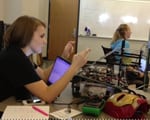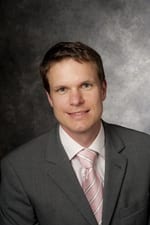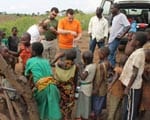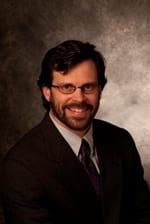Technology reporter Jacob Aron with New Scientist covered the Bitcoin research of SMU cybersecurity expert Tyler W. Moore, an assistant professor of computer science in the Lyle School of Engineering.
Moore’s research found that online exchanges that trade hard currency for the rapidly emerging cyber money known as Bitcoin have a 45 percent chance of failing — often taking their customers’ money with them.
The finding is from a new computer science study that applied survival analysis to examine the factors that prompt Bitcoin currency exchanges to close.
Moore carried out the research with Nicolas Christin, with the Information Networking Institute and Carnegie Mellon CyLab at Carnegie Mellon University.
Aron’s coverage, “Bitcoin hits $200 but swapping for real money is risky,” was published online April 9.
EXCERPT:
Jacob Aron
New Scientist
Online currency Bitcoin hit yet another record high today as it smashed through the $200 barrier, but a new analysis of Bitcoin exchanges shows that swapping real-world cash for its virtual equivalent can be a risky business.The stratospheric rise of Bitcoin in recent days – it was at $70 just two weeks ago and less than $10 when we first wrote about it – has left many wishing they had got in on the currency when it was much cheaper. But it is easy to forget that Bitcoin exchanges, where many users store their cash, have a history of being hacked or even folding altogether.
Tracking the fortunes of 40 such exchanges over the past three years, Tyler Moore of Southern Methodist University in Dallas, Texas, and Nicolas Christin of Carnegie Mellon University in Pittsburgh, Pennsylvania, discovered that 18 have closed. Of these, five failed to reimburse their customers, while six claimed they did. The pair were unable to confirm either way for the remaining seven exchanges.
The pair also used mathematical modelling to predict the general behaviour of Bitcoin exchanges, and found that there is a 30 per cent chance of an exchange folding within one year of opening, increasing to nearly 80 per cent after two years.
Unsurprisingly, the larger exchanges such as Mt.Gox are much less likely to implode, but the findings suggest these popular money-swappers are also at greater risk of hack attacks. “The continued operation of an exchange depends on running a high transaction volume, which makes the exchange a more valuable target to thieves,” say the pair in a paper presented at the Financial Cryptography conference in Okinawa, Japan, last week.
So, jump on the Bitcoin bandwagon by all means – but as with all investments, don’t risk anything you aren’t prepared to lose.
Follow SMUResearch.com on Twitter.
For more information, www.smuresearch.com.
SMU is a nationally ranked private university in Dallas founded 100 years ago. Today, SMU enrolls nearly 11,000 students who benefit from the academic opportunities and international reach of seven degree-granting schools. For more information see www.smu.edu.
SMU has an uplink facility located on campus for live TV, radio, or online interviews. To speak with an SMU expert or book an SMU guest in the studio, call SMU News & Communications at 214-768-7650.

 To book a live or taped interview with Dr. Tyler Moore in the SMU
To book a live or taped interview with Dr. Tyler Moore in the SMU  Musicians who learn a new melody demonstrate enhanced skill after a night’s sleep
Musicians who learn a new melody demonstrate enhanced skill after a night’s sleep Study finds that newlyweds who are satisfied with marriage are more likely to gain weight
Study finds that newlyweds who are satisfied with marriage are more likely to gain weight Fruit flies fed organic diets are healthier than flies fed nonorganic diets, study finds
Fruit flies fed organic diets are healthier than flies fed nonorganic diets, study finds Center for Creative Leadership to study innovative learning method of SMU Lyle School of Engineering
Center for Creative Leadership to study innovative learning method of SMU Lyle School of Engineering





 A mathematical model determines which nations are more stable and which are more likely to break up
A mathematical model determines which nations are more stable and which are more likely to break up SMU to help solve dangerous refugee water issues
SMU to help solve dangerous refugee water issues Anthropology researcher to study human-fire-climate interactions
Anthropology researcher to study human-fire-climate interactions

 To book a live or taped interview with Marc Christensen and Volkan Otugen in the SMU
To book a live or taped interview with Marc Christensen and Volkan Otugen in the SMU 
